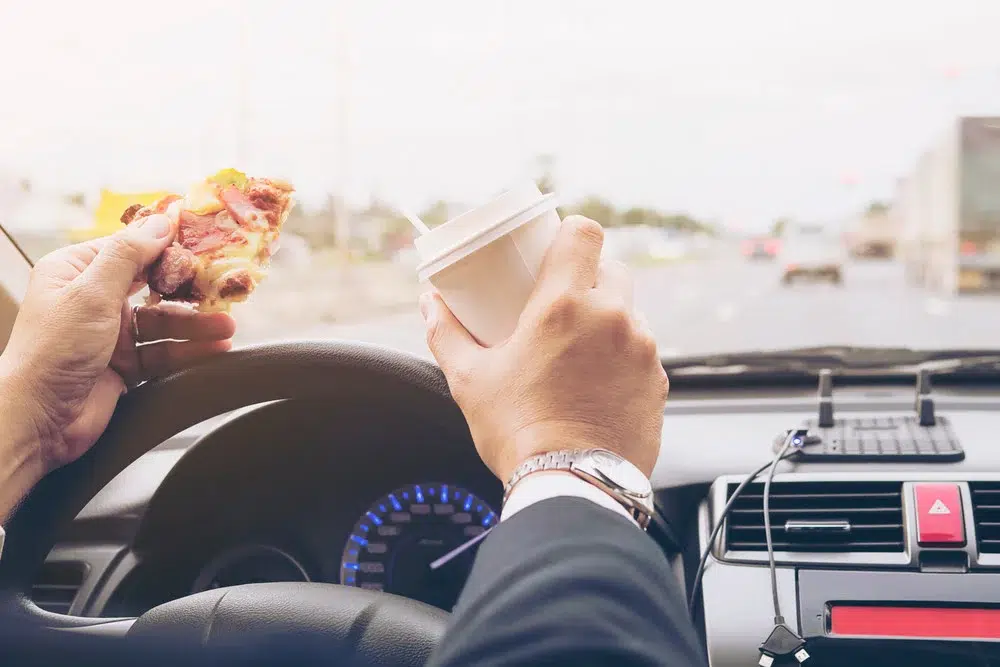Skipcart offers a dynamic platform for individuals seeking flexible work opportunities through delivery services. By connecting drivers with local delivery gigs, Skipcart allows drivers to utilize their vehicles to deliver groceries, catering orders, and more. With a user-friendly app, it provides a straightforward way for drivers to earn money on their own schedules. This guide explores how to become a Skipcart driver, the pay structure, tips for maximizing earnings, and understanding tax responsibilities.

What is Skipcart?
Skipcart is a technology platform that connects drivers with delivery opportunities in their cities. Drivers use their own vehicles to pick up and deliver goods, ranging from groceries to catering orders. Moreover, the app provides a straightforward way for individuals to earn money on a flexible schedule.
How to become a Skipcart Driver
Driver Requirements
To become a Skipcart driver, you must meet the following requirements:
- Be at least 21 years old.
- Own a reliable vehicle.
- Have a smartphone with iOS 9.0 or newer, or Android 7.0 or newer.
- Hold a valid U.S. driver’s license and auto insurance.
- Pass a thorough background check.
- Be able to lift at least 50 pounds.
- Possess a valid Social Security Number (SSN).
Sign-Up Process
Applying to drive with Skipcart involves a few simple steps:
- Provide Personal Information: You will need to enter your name, email, phone number, and select your state and metro area.
- Background Check: Submit to a background check, which typically takes 3-5 business days.
- Document Submission: Upload required documents like your driver’s license and insurance information.
- App Download: Install the Skipcart app from the App Store or Google Play.
- Activation: Once your background check is approved, you’ll receive instructions on how to start accepting deliveries.
Skipcart’s Pay and Bonuses
Pay Model
Skipcart’s pay model includes a base fare for each delivery, with additional earnings for longer distances and high-demand times. Bonuses and incentives are also offered for completing a certain number of deliveries within a specified timeframe. Here’s an overview of the pay structure:
- Base Fare: A fixed amount for each delivery.
- Distance Pay: Additional compensation for longer delivery distances.
- Time-Based Bonuses: Extra earnings during peak hours.
- Incentives: Bonuses for completing a set number of deliveries within a given period.
Pay Cycle
Drivers are paid weekly through direct deposit. Detailed earnings reports are available in the app, providing transparency about your pay and any bonuses you’ve earned. There is also a cash-out option to request deposits outside the payment cycle.
Tips and Tricks for Enhanced Earnings
To maximize your earnings as a Skipcart driver, consider these tips:
- Deliver a 5-Star Experience: Providing excellent customer service can increase your tips and lead to higher ratings.
- Understand Catering Orders: Catering orders can be more lucrative but require careful handling and punctuality.
- Best Practices for Deliveries: Plan your routes efficiently, and communicate clearly with customers.
What Are the Tax Responsibilities for Skipcart Drivers?
As a Skipcart driver, you operate as an independent contractor. This means that unlike traditional employees, who have taxes withheld from their paychecks, you must manage your own tax affairs. This involves several key aspects of self-employed taxation:
Quarterly Tax Payments
Because your income isn’t subject to automatic withholding, the IRS requires you to make estimated tax payments quarterly. Making these payments helps you manage your cash flow better and avoid large lump-sum payments at tax time. These payments cover your income tax and self-employment tax obligations for the year:
- Income Tax: The income tax you owe as an independent contractor is based on your adjusted gross income. This includes all your earnings minus allowable deductions and exemptions. Since your tax rate depends on your total income, it’s crucial to accurately report all earnings and understand which deductions you can claim to reduce your taxable income.
- Self-Employment Tax: In addition to income tax, independent contractors must pay self-employment tax, which covers your contributions to Social Security and Medicare. This tax is calculated on your net earnings from self-employment, and it’s essential to include this in your quarterly tax payments to avoid penalties.
Annual Income Tax Return
You must file an income tax return with the IRS using Form 1040 each year. Along with this form, you’ll attach Schedule C, which is used to report the income you’ve earned as a Skipcart driver. This form helps you calculate your net business income after deductions, forming the basis for your income tax and self-employment tax.
Understanding these elements of self-employed taxation ensures you meet your tax obligations as a Skipcart driver, avoid potential penalties, and possibly reduce the amount of tax you owe through strategic deductions and credits.
What is the 1099 Form I Have Received from Skipcart?
As a Skipcart driver, you will receive a Form 1099 from Skipcart, detailing the income you earned over the year without any tax withholdings. This form is essential for accurately reporting your income to the IRS and ensuring you’re not overpaying or underpaying your Skipcart delivery tax dues.
What Tax Deductions Am I Eligible For?
Understanding and utilizing tax deductions can significantly reduce your taxable income, potentially saving you a considerable amount of money each year. For Skipcart delivery drivers, various expenses directly related to your driving activities can be deducted from your taxes. Here’s a deeper look at some of the specific deductions you might be eligible for:
Mobile Phone and Data Plans
Since a smartphone is essential for managing your delivery routes and communicating with customers and the Skipcart platform, a portion of your phone bill and data plan can be deducted. The key here is only to deduct the percentage of time the device is used for work-related activities.
Health Insurance Premiums
If you’re self-employed and responsible for your own health insurance coverage, you may be able to deduct premiums paid for medical, dental, and some long-term care insurance. This deduction is taken on your Form 1040 and can reduce your adjusted gross income.
Meals
While on the road, you might need to purchase meals. A portion of these expenses can be deductible if the meals are consumed during a business operation. Note that after the Tax Cuts and Jobs Act, only 50% of these expenses are generally deductible.
Supplies and Accessories
Any supplies you purchase directly for use in your delivery work can be deductible. This includes things like maps, flashlights, batteries, car chargers, or even more substantial items like a car-top carrier or specialized equipment for handling your deliveries.
Parking and Tolls
Fees for parking and tolls paid while on delivery jobs can be fully deductible. However, parking tickets and fines are not deductible.
Vehicle Expenses
This is one of the largest categories of deductions for delivery drivers. You have two choices here—either deduct actual vehicle expenses or use the standard mileage rate. Actual expenses include gas, oil, repairs, tires, insurance, depreciation, and lease payments. Alternatively, the standard mileage rate simplifies record-keeping by allowing you to deduct a set amount for each business mile driven, as specified by the IRS each year.
Accurate record-keeping of your expenses and miles is crucial as it provides evidence for your claims in case of an IRS audit. Utilizing these deductions effectively can lead to substantial savings in your tax liabilities, enhancing your overall financial success as a Skipcart delivery driver.
The Power of Mileage Deduction for Delivery Drivers
Mileage tax deduction offers a straightforward way to reduce delivery drivers’ tax burden. The IRS allows a set deduction amount per business mile driven, simplifying record-keeping and calculation. Keeping an accurate and IRS-compliant mileage log for your Skipcart driver gig is crucial to take advantage of this deduction.
How Can I Keep a Compliant Mileage Log?
Maintaining an IRS-compliant mileage log requires diligent record-keeping. Whether you opt for a manual method like a notebook, a Google / Excel spreadsheet, or a specialized app, the key is to accurately capture every business-related drive. Consistent and regular entries in your mileage log for your delivery driving business are crucial, as they provide more precise records and save you from the rush of retrospectively creating your logs during tax time.
The choice between paper logs, digital spreadsheets, and sophisticated apps depends on your personal preference, comfort with technology, and daily routine. Paper logs and spreadsheet templates, while simple, require manual updates. On the other hand, software and apps offer more convenience and accuracy, especially with features designed to simplify the process.
MileageWise: The Optimal Mileage Tracking Solution for Skipcart Drivers
MileageWise stands out as a mileage tracking solution specifically designed for delivery drivers. MileageWise’s mileage tracker app automates the tracking process, ensuring your mileage logs are precise and compliant with IRS regulations. Using MileageWise can transform your tax preparation efforts, making them more streamlined and less prone to error.
Download MileageWise’s automatic mileage tracker app from Google Play or the App Store & try it for free for 14 days. No credit card required!

Best features of the MileageWise mileage tracking app for delivery drivers:
Standby Timer Feature
Unlike other mileage tracking apps, MileageWise does not follow every move of your vehicle but records arrivals and calculates distances in the background. Therefore, it uses less battery and complies with privacy regulations. To ensure the automatic tracker doesn’t log every stop (for example, at a red light) as a destination, you have to spend a certain time at a location for the app to record it as an arrival.
The standby timer setting allows you to tailor this timeframe to your specific needs, which is crucial for delivery drivers. Just set the timer based on how long you’re idle at each location before you depart on your next delivery.
Built-in IRS Auditor
MileageWise includes a built-in IRS Auditor that rigorously examines mileage logs to ensure they adhere to IRS standards. This feature identifies up to 70 potential issues or inconsistencies in historical logs and offers corrections to mitigate risks during tax audits.
Automatic Trip Classification
This functionality enables users to effortlessly classify trips as business or personal based on predefined rules. The Auto-Classification feature streamlines the documentation process and ensures accurate reporting for taxation or reimbursement purposes.
Retrospective Mileage Log Generation
For users who have not kept real-time mileage records, this function allows the creation of past logs using historical data and patterns, such as those found in Excel spreadsheets or Google Timeline, aiding in the accurate reconstruction of logs.
AI Wizard Feature
The AI Recommendation Wizard improves mileage logs by recommending the most advantageous trips and settings, drawing from a user’s historical driving patterns and data. This tool not only increases your Skipcart mileage tax deductions but also aids in precisely reconstructing past trips to match odometer records and claimed tax deductions, even if you don’t have any backup datat like Google Timeline.
Conclusion
Becoming a Skipcart driver can be an excellent way to earn extra income with the freedom to set your own hours. By understanding the requirements, following the sign-up process, and remembering tips for enhanced earnings, you can optimize your delivery experience. Additionally, staying informed about tax responsibilities and utilizing deductions can help you manage your finances efficiently.
Whether you’re looking for a full-time gig or a part-time job, Skipcart offers a flexible and rewarding opportunity.
FAQs
What are the vehicle requirements for Skipcart drivers?
Drivers must have a reliable vehicle, valid U.S. driver’s license, and auto insurance.
How long does the sign-up process take?
The sign-up process, including the background check, typically takes 3-5 business days.
What documents are needed to sign up?
You will need a valid driver’s license, proof of insurance, and a Social Security Number (SSN).
How is Skipcart pay structured?
Pay includes a base fare per delivery, additional compensation for longer distances, and bonuses for peak times and completing a set number of deliveries.
When do Skipcart drivers get paid?
Drivers are paid weekly through direct deposit, with detailed earnings reports available in the Skipcart app. There is also a cash-out option for deposits outside the payment cycle.
What are the tax responsibilities for Skipcart drivers?
As independent contractors, drivers must handle their own taxes, including making quarterly tax payments, managing income and self-employment taxes, and filing an annual tax return.
Download MileageWise’s automatic mileage tracker app from Google Play or the App Store & try it for free for 14 days. No credit card required!
Rebeka Barefield
| MileageWise | Other Mileage Tracker Apps | Other GPS Based Trackers | Excel | Tax Professional | |
| Mobile App for Ongoing Tracking | |||||
| Web Dashboard to Manage Trips | |||||
| Imports Trips and Locations from Google Timeline | |||||
| Lifetime Deals Available | |||||
| Average Reported Business Mileage Deduction | $12,000 | $710-$8500 | $400-$5,700 | $200-$2,000 | |
| Average Time Creating Retrospective Mileage Log (Yearly) | 7 minutes | 180 minutes | 180 minutes | 180 minutes | N/A |
| AI Wizard Mileage Log Generator for Retroactive Mileage Recovery | |||||
| Produces IRS-Proof Mileage Logs | |||||
| Free Phone Support with Live Agent | |||||
| Mileage Log Preparation Service | |||||
| Data Accessible in the Cloud |








